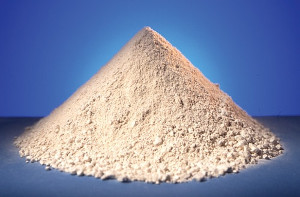What is natural clay and/or Loam?
What is natural clay and/or Loam?
Natural clay is extremely fine mineral sediment. It consists of small minerals with exceptional active properties. Loam is natural clay mixed with sand and silt. Natural clay is used in the manufacture of bricks, porcelain, plates, paper, in nanotechnology, food, etc. It is also used in the prevention of diseases and for the purification of the organism. Natural clay/loam regulates the humidity in the house by the ideal value of 50%. Thanks to its excellent ion-exchangeability, it is able to neutralize odours and smoke. Products with natural clay age very slowly because they have photo-catalytic properties and good anti-electrostatic properties (they repel dust). Natural clay is a healthy and eternally recyclable material. According to recent studies, natural clay/loam reduces exposure to electrosmog and effectively counteracts (geo)pathological radiation.
What is silicate and/or water glass?
What is silicate and/or water glass?
The earth's crust is made of different silicates. Potassium/sodium silicate are health-friendly minerals. They are glass in a liquid state. Potassium/sodium silicate is ideal for storing food (e.g. eggs), removing heavy metals from water through ion exchange, and as a mineral binder for high-quality paints and plasters. Potassium/sodium silicate sterilizes with high pH-value and kills algae and mold on the wall. During the drying process, the water glass reacts with the Co2 in the air, binds it, hardens out, and crystallizes. Once dry, the silicate crystals remain water-insoluble and extremely breathable. Products made of water glass are mineral, so they have good fire resistance and do not emanate harmful gases and odors, even in case of fire.
What is the difference between CaSiCLIMA patents and standard clay/loam building materials?
The main difference is the good resistance to water, splash, abrasion, and their practical installation. Water glass has always been used in Eco-buildings. It is sprayed as a surface fixation on sandy plasters or chalky colors. The difference between this method and the CaSiCLIMA patents is that on the one hand water glass is sprayed onto the final plaster layer without guaranteeing a homogeneous distribution. Most of the water glass stays on the outside of the clay plaster/loam paint layer, just that which regulates the living comfort; and this reduces the positive properties of the natural clay. As it remains just on the outer plaster/paint layer, the water glass does not increase the adhesion to the base material. It crumbles on contact with moisture and water (just think of a classic situation: the floor is often cleaned with water). The uneven spraying of water glass can also easily lead to irreversible stains on the loam plaster/loam paint. It can also destroy the mineral pigments contained in the products, as well as attack other materials in the environment (such as wood, tiles, and glass). On the other hand, in the clay-silicate CaSiCLIMA patents, the minimal application and impact of the water glass on the entire plaster layer/paint/board is indirect because it is homogeneously distributed throughout its thickness. Thus, the properties of the natural clay/loam are not changed and the adhesion to the base material is very strong even at high humidity. Thanks to precise formulations and the possibility of blending all the components in the factory with the utmost precision, the mineral pigments are also well protected from the pH value of the water glass. Thanks to the homogeneous mixture with water glass, the CaSiCLIMA clay-silicate products are very easy and quick to install. They are the new standard in modern and smart ECO house buildings.
Can I apply CaSiCLIMA plasters / wall paints on traditional building materials?
CaSiCLIMA plasters/wall paints can be applied over any stable indoor material, after applying the CaSiCLIMA PRIMER water glass primer. This liquid can be applied with a brush, roller, or compressed air. It is recommended to cover sensitive materials such as wood, tiles, glass, bricks in the environment to avoid the irreversible reaction of splashes on these materials. In the worst case, the CaSiCLIMA primer can also be used as an end-fixative for platers/paints, but as explained before a very homogeneous application is recommended.
Is it better to remove old wall paints before applying CaSiCLIMA?
The removal of old, non-breathable layers of paint is not absolutely necessary, as these represent a form of vapour control layer to the outside and they do not change the positive effect of the clay-silicate products.
The CaSiCLIMA RIGID board is very hard, how do I cut it?
The CaSiCLIMA RIGID boards are among of the hardest on the market, with good static properties. They were cut with an angle grinder. Short and precise cuts can be made with a jigsaw or circular saw, in both cases, a blade for mineral materials should be preferred. We recommend vacuuming the resulting dust directly and immediately with a good vacuum cleaner.


